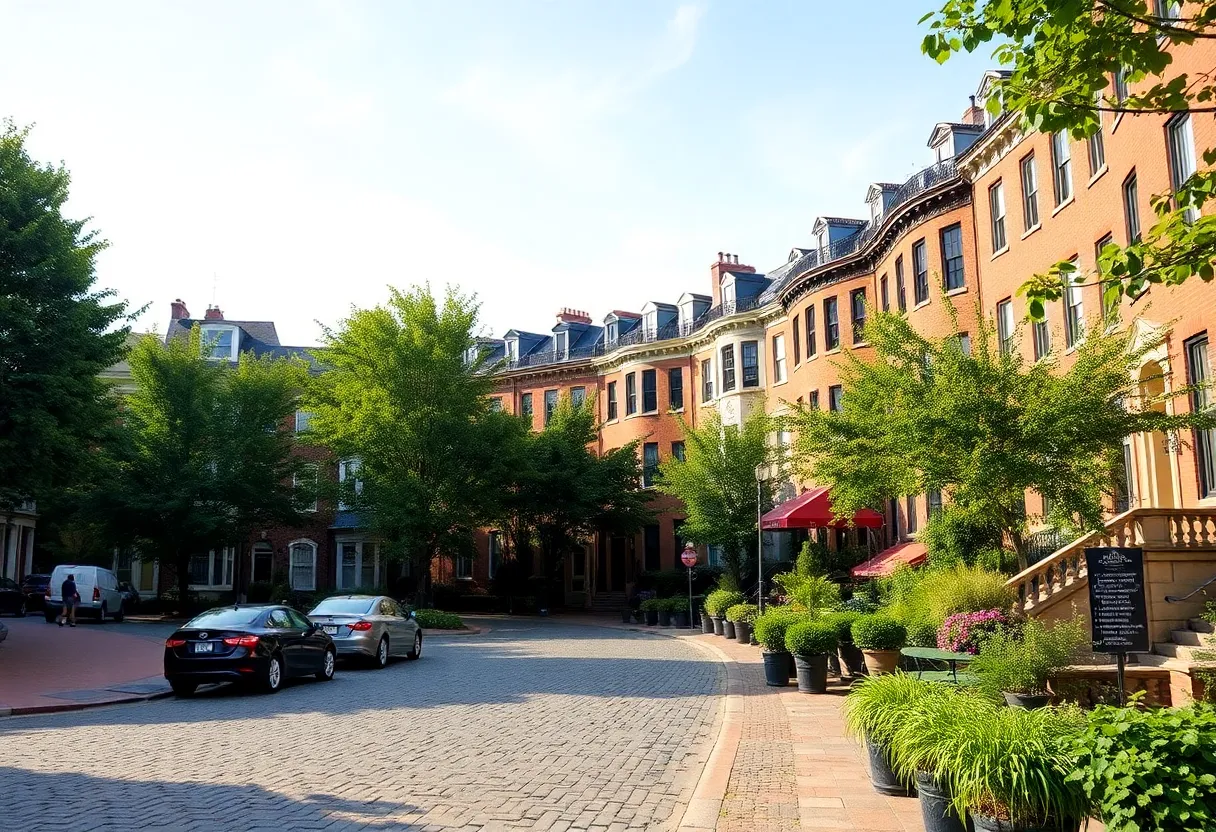How to Successfully Leverage Philadelphia’s Historic Neighborhoods in Your Home Search
Introduction
Philadelphia’s historic neighborhoods are treasures that reflect centuries of architectural ingenuity, cultural richness, and community vitality. For prospective homeowners, understanding the nuances of these areas is essential to making informed decisions. This comprehensive guide addresses how to navigate, evaluate, and leverage Philadelphia’s historic districts effectively—ensuring your home purchase aligns with your financial goals, preservation interests, and lifestyle preferences.
Understanding Philadelphia’s Historic Neighborhoods
Philadelphia boasts neighborhoods with preserved architecture, vibrant local culture, and proximity to iconic landmarks. These districts are distinguished by:
- Authentic cobblestone streets and brick sidewalks that echo colonial pasts
- Architectural diversity including Georgian, Federal, Victorian, and other styles
- Proximity to historic sites, museums, parks, and cultural institutions
Ownership in these neighborhoods often involves navigating preservation regulations, understanding market trends, and recognizing the long-term value of historic charm combined with community vibrancy.
Key Historic Neighborhoods to Consider
1. Society Hill
Overview: Nestled in the heart of Center City, Society Hill is among Philadelphia’s oldest residential districts, established in the early 1680s. Its well-preserved architecture reflects the city’s colonial roots.
Features:
- Architecture: Primarily Georgian and Federal-style rowhouses with distinctive facades
- Amenities: walking distance to Independence Hall, Liberty Bell, Washington Square Park
- Real Estate: A mix of historic homes and contemporary townhomes
Considerations:
- Market trends: High property values and income levels make it one of the most expensive neighborhoods
- Preservation guidelines: Strict rules may restrict exterior modifications, requiring approval for renovations
2. Queen Village
Overview: Located directly south of South Street, Queen Village blends historic charm with modern urban living.
Features:
- Architecture: Serene 18th-century rowhouses alongside modern residences
- Amenities: Access to Fabric Row shopping district, parks, trendy restaurants
- Community: Strong neighborhood associations foster active engagement
Considerations:
- Affordability: Offers more accessible options compared to Society Hill, appealing to first-time buyers
- Development: The area’s ongoing revitalization influences property values and community dynamics
3. Rittenhouse Square
Overview: Centered around an lush park, Rittenhouse Square epitomizes luxury and history.
Features:
- Architecture: Opulent mansions, brownstones, and high-rise condos
- Amenities: Upscale shopping districts, cultural venues, fine dining
- Community: Active neighborhood association with frequent cultural events
Considerations:
- Market data: Median sale prices hover around high six figures, reflecting the upscale nature
- Property Value: Homes tend to appreciate steadily but come with higher purchase costs
4. Northern Liberties
Overview: Once an industrial zone, Northern Liberties has undergone significant gentrification, transforming into a hub for young professionals and creatives.
Features:
- Architecture: Conversion of warehouses for residential use, alongside modern and historic rowhouses
- Amenities: Dynamic arts scene, music venues, a variety of breweries and eateries
- Community: Active, youthful, and diverse
Considerations:
- Market: As of 2024, median sale prices are around $525,000, reflecting strong appreciation
- Development trends: Rapid gentrification influences market dynamics and community structure
Critical Factors When Purchasing in Historic Neighborhoods
1. Preservation and Regulations
Many districts are designated as historic districts, imposing zoning restrictions on exterior modifications to retain architectural integrity. Projects like porch replacements, window alterations, or additions often require approval from local historic preservation commissions.
2. Financing and Insurance
Obtaining mortgage financing for historic properties can be complex due to perceived risks and unique property features. Additionally, insurance premiums may be higher; policies should specify coverage for restoration costs or special features.
3. Maintenance and Restoration
Owning a historic home entails higher ongoing costs. Restorations often involve specialized materials, craftsmanship, and adherence to preservation standards. The process can be lengthy and costly, demanding careful budgeting and engagement with experienced contractors.
4. Market Trends and Appreciation
Historic properties, especially in revitalized neighborhoods, tend to appreciate significantly. Demand for authentic architectural features keeps valuing these homes, but market fluctuations should be monitored closely.
Strategies to Effectively Leverage Historic Neighborhoods in Your Home Search
1. Conduct In-Depth Research
Review comprehensive neighborhood profiles including history, demographics, amenities, and recent sales data. Recognize *which features* appeal most—be it architecture, community vibe, or proximity to landmarks.
2. Collaborate with Local Experts
Partner with real estate agents experienced in historic properties who understand local regulations and market nuances. Similarly, consult with legal professionals familiar with preservation laws and permits.
3. Prioritize Authenticity and Preservation Compatibility
Seek properties with original features that can be restored or maintained. Confirm that renovations align with local guidelines to avoid complications and ensure ongoing eligibility for preservation incentives.
4. Financial Planning and Incentive Optimization
Factor in the costs for restoration, ongoing maintenance, and potential property value appreciation. Explore tax credits, grants, and incentive programs that can offset renovation expenses, especially for qualifying historic projects.
Conclusion
Philadelphia’s historic neighborhoods offer a unique confluence of rich history, architectural beauty, and community engagement. Navigating this market requires careful research, expert guidance, and strategic planning. By understanding preservation regulations, evaluating financial considerations, and appreciating neighborhood dynamics, you position yourself for a successful purchase. Embrace the city’s storied past while securing a home that resonates with history and modern living.
Frequently Asked Questions (FAQ)
What defines a historic neighborhood in Philadelphia?
Historic neighborhoods in Philadelphia are characterized by preserved architecture, cultural landmarks, and vibrant communities. They often feature cobblestone streets, brick sidewalks, and a mix of Georgian, Federal, and Victorian-style homes.
Are there financial incentives for purchasing historic homes in Philadelphia?
Yes, there are tax credits and grants available for historic preservation projects. It is recommended to explore local programs and eligibility criteria before acquisition.
How do preservation regulations affect renovations in historic neighborhoods?
Renovations often require approval from local preservation commissions, especially for exterior changes. Adhering to strict guidelines maintains architectural integrity and eligibility for incentives.
What are the maintenance challenges of owning a historic home?
Historic homes require specialized materials and craftsmanship for repairs. Maintenance can be costly and time-consuming, emphasizing the importance of experienced contractors.
How do property values in historic neighborhoods compare to other areas in Philadelphia?
Property values vary, with neighborhoods like Society Hill commanding higher prices, while areas like Northern Liberties offer more affordable options. Market trends should be thoroughly analyzed for current insights.
| Neighborhood | Architectural Style | Main Amenities | Average Price Range | Community Vibe | Preservation Regulations |
|---|---|---|---|---|---|
| Society Hill | Georgian, Federal | Historic sites, parks | High ($700k+) | Historic and upscale | Strict exterior guidelines |
| Queen Village | 18th-century rowhouses, modern | Shopping, parks, dining | Moderate ($400k–$600k) | Vibrant, community-focused | Moderate preservation rules | Rittenhouse Square | Mansions, brownstones, condos | Upscale retail, cultural venues | High ($600k–$1M+) | Luxurious, active cultural scene | Stringent for exterior modifications |
| Northern Liberties | Warehouse conversions, modern rowhouses | Arts venues, dining | Moderate ($400k–$550k) | Trendsetting, youthful | Gentrification-influenced regulations |
Author: STAFF HERE PHILADELPHIA WRITER
The PHILADELPHIA STAFF WRITER represents the experienced team at HEREPhiladelphia.com, your go-to source for actionable local news and information in Philadelphia, Philadelphia County, and beyond. Specializing in "news you can use," we cover essential topics like product reviews for personal and business needs, local business directories, politics, real estate trends, neighborhood insights, and state news affecting the area—with deep expertise drawn from years of dedicated reporting and strong community input, including local press releases and business updates. We deliver top reporting on high-value events such as Mummers Parade, Philadelphia Flower Show, and Thanksgiving Day Parade. Our coverage extends to key organizations like the Greater Philadelphia Chamber of Commerce and United Way of Greater Philadelphia, plus leading businesses in telecommunications, food services, and healthcare that power the local economy such as Comcast, Aramark, and Children's Hospital of Philadelphia. As part of the broader HERE network, we provide comprehensive, credible insights into Pennsylvania's dynamic landscape.





